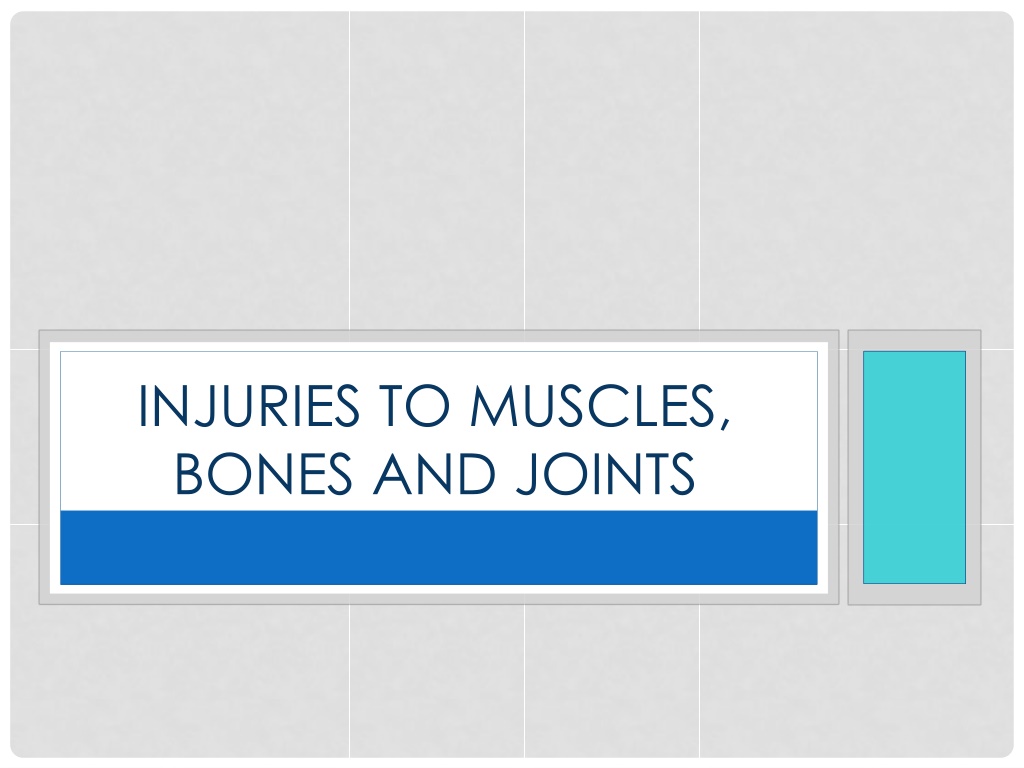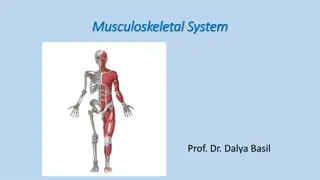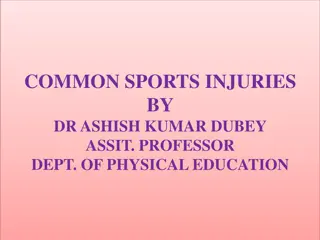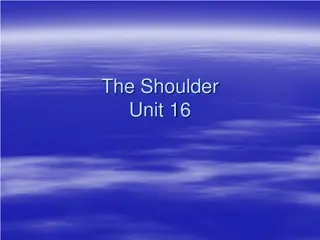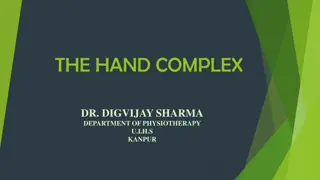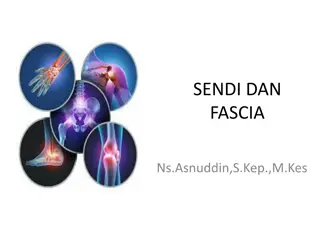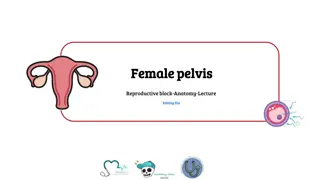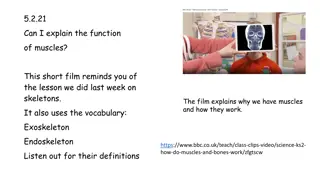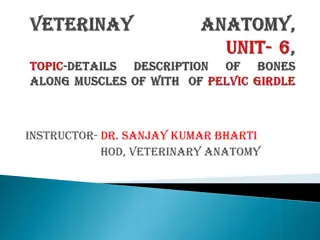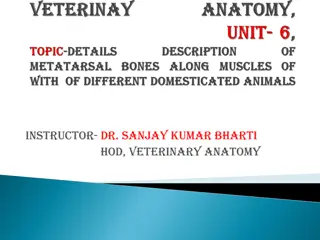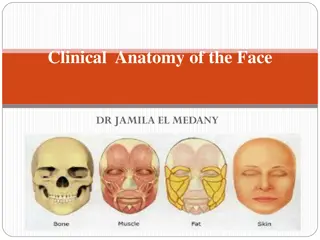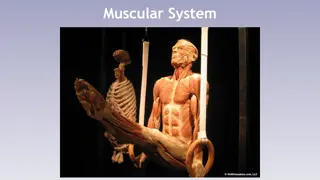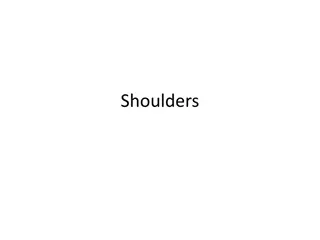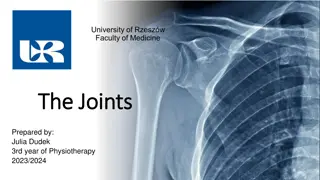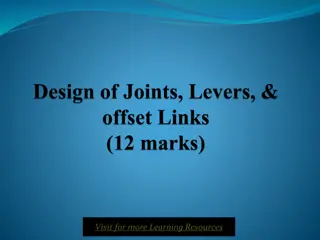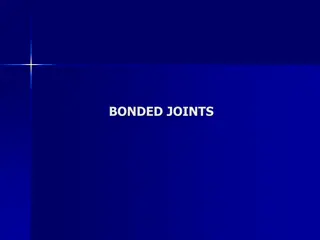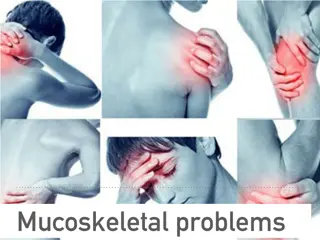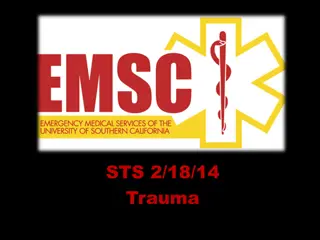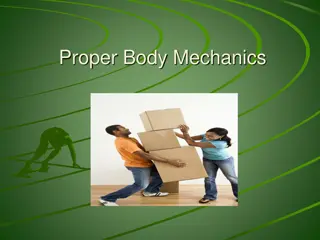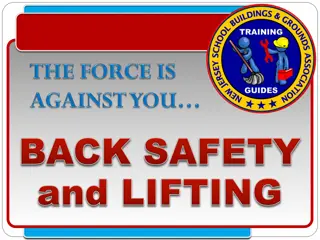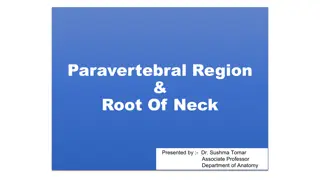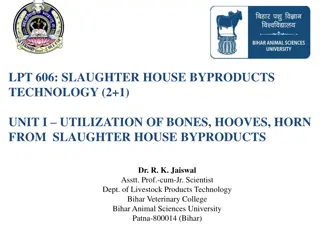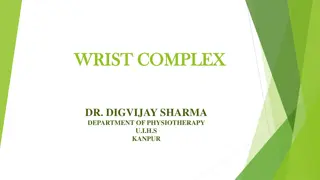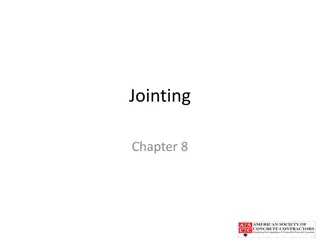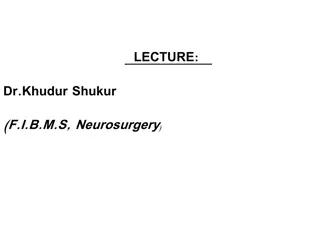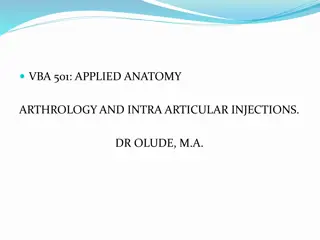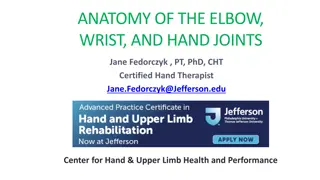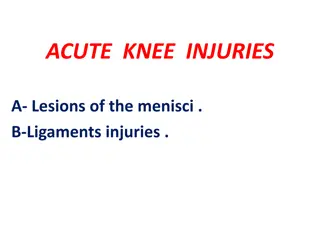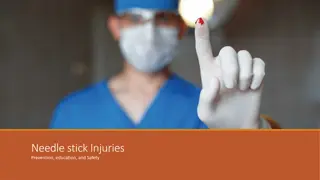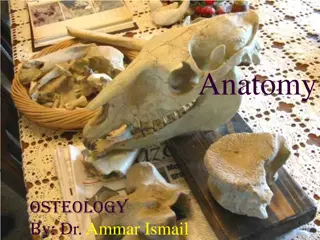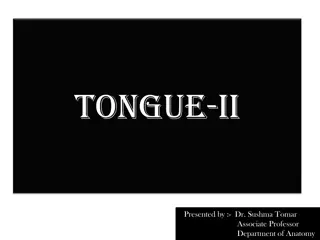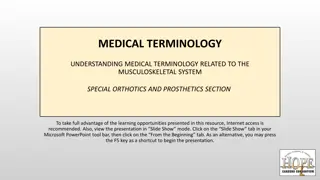Comprehensive Guide on Injuries to Muscles, Bones, and Joints
Explore various types of injuries such as dislocation, sprain, and fracture affecting muscles, bones, and joints. Learn about the signs of injury, splinting techniques, and common locations for strains. Discover how to identify and handle injuries effectively to promote recovery and prevent further damage.
Download Presentation

Please find below an Image/Link to download the presentation.
The content on the website is provided AS IS for your information and personal use only. It may not be sold, licensed, or shared on other websites without obtaining consent from the author. Download presentation by click this link. If you encounter any issues during the download, it is possible that the publisher has removed the file from their server.
E N D
Presentation Transcript
INJURIES TO MUSCLES, BONES AND JOINTS
4 TYPES of INJURIES DISLOCATION SPRAIN SPRAIN
F R A C T U R E A complete break, chip, or a break in the bone. Caused by falls, twisting, large force. 4 types of fractures
http://media.web.britannica.com/eb-media/96/63296-004-5324F524.gifhttp://media.web.britannica.com/eb-media/96/63296-004-5324F524.gif
D I S L O C A T I O N Movement by a bone or joint away from its original position. Displaced bone often makes a bump or a ridge. Most common dislocation: Shoulders and fingers
3. .
S P R A I N A tearing of the ligaments at the joint. Caused by a twisting motion or a violent blow. Most common Sprain: Ankle.
http://footanklesf.com/wp-content/uploads/2013/08/ankle-sprain.pnghttp://footanklesf.com/wp-content/uploads/2013/08/ankle-sprain.png http://feetfixer.com/images/secondaryn/ankle_sprain.png
S T R A I N Stretching and tearing of muscles and tendons. Often by lifting something heavy. Most common location: Lower Back and Neck.
SIGNS OF INJURY Significant deformity Bruising or swelling Inability to use the affected part normally Bone fragments sticking out of a wound Person feels bones grating; felt or heard a snap or pop. Cause of injury suspects that injury may be severe Area is cold or numb
SPLINTING Never move the injury to splint! Splint only if you can do so without causing pain. Splint above and below the injury Always check for circulation after splinting.
TYPES OF SPLINTS http://www.healthandcare.co.uk/user/products/large/3PP-Buddy-Loop.jpg ANATOMICAL SPLINT
TYPES OF SPLINTS http://shop.posey.com/Images/products/8170_200x200_Posey%C2%AE-Soft-Splints.jpg SOFT SPLINT
TYPES OF SPLINTS https://www.cprprofessor.com/images/lag.jpg RIGID SPLINT
